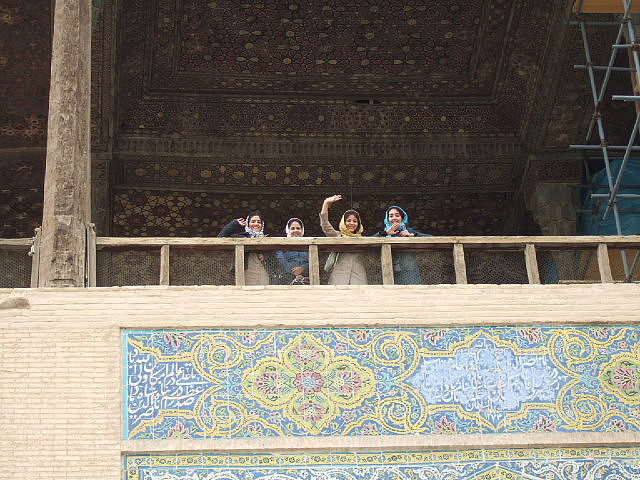 Prevalence
Prevalence
In Iran, women who undergo FGM – often called Khatne or Sonat – primarily undergo Type I or rarely Type II FGM. Some local reports show that in the Khuzestan province, maybe, infibulation is performed (the activists are not sure). The type varies from one region to the next. While in some villages in Kermanshah and Kurdistan women believe that some small amount of bleeding from a cut is necessary, in other areas such as Hormozgan the genitals may be more extensively cut. The vast majority of FGM procedures are carried out by traditional local female circumcisers, including Roma women passing through the villages, midwives sometimes known as dayeh or Bibis depending on the region, and family members (older women who are well respected in the villages). Generally it is a girl’s mother, grandmother, or other female relative that decides whether she will undergo FGM.
FGM is typically performed in the home. The clitoris is cut with a knife or razor blade and then ash, alcohol or local medicines (like Sorkhou) is used to clean and close the wound. In some areas, there is a trend toward medicalization where circumcisers use Betadine and bandages in an attempt to make the procedure more hygienic. FGM is typically performed when girls are very young and likely to forget the pain at 40 days or older, though the age varies depending on the region. In other areas girls range from ages three to six, and in some cases older girls undergo the procedure before marriage. In Bandar Kong, a port city where some studies found that up to 70 percent of the women have undergone FGM, accrding to research by Kameel Ahmady (This study was about more than 12 years ago).
Concencentrated among Sunnis
The practice of FGM has primarily been concentrated among the Shafi’i Kurds and Sunni minority of Iran primarily in rural areas such as Kurdestan, Hormozgan, Western Azerbaijan, Kermanshah, Lorestan and a handful of other regions.Hormozgan has the highest prevalence of FGM at over 60 percent. In West Azerbaijan, Kermanshah, and Kurdistan the rates range from 15 to 35 percent. Kameel Ahmady, who recently published a study on FGM in Iran, found there was between an 8 to 15 percent decline in the rate of FGM between 2010 and 2014 in the provinces of Hormozgan, Western Azerbaijan, Kermanshah and Kurdistan. Interviews showed that 38% of women and men aged 15-49 still support the practice of FGM because of religion, tradition and culture. Another study which was written by Stop FGM Iran found that nearly half of respondents wanted their daughters to undergo FGM in the future. Interestingly, more than half of respondents believed a legal ban on FGM would be effective to prevent it.
A recent study shows that the rate of FGM has declined over the past ten years across Iran. In Piranshahr, West Azerbaijan, less than 10 percent of women and girls ages 15-29 have undergone FGM, compared to 43 percent of women ages 30-49. 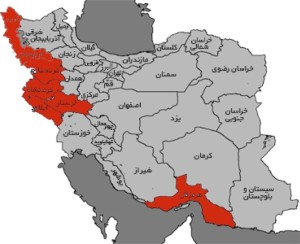 In Javanrood, Kermanshah, only about 6 percent of women and girls ages 15-29 have undergone FGM, compared to 41 percent of women ages 30-49. FGM among women and girls aged 15 to 29 is 30 percent lower than the rate among women aged 30 to 49, and is lower than 8 percent among girls under 10 years old.
In Javanrood, Kermanshah, only about 6 percent of women and girls ages 15-29 have undergone FGM, compared to 41 percent of women ages 30-49. FGM among women and girls aged 15 to 29 is 30 percent lower than the rate among women aged 30 to 49, and is lower than 8 percent among girls under 10 years old.
“FGM to save women from devil”
FGM continues to be practiced in Iran for various reasons. Women are likely to have their daughters undergo FGM in order to improve their chances of marriage. FGM is viewed as a way to ensure the chastity of a young girl, reduce sexual desire, and keep her “pure” for her future husband. Girls who have undergone FGM may be viewed as more desirable than those who have not because of the high value placed on female virginity in Iranian and Islamic culture. Some believe after birth clitorises become big and ugly, and cutting makes them more attractive, clean, and beautiful.
Rural Kurds who are followers of “Shafi’i faith believe that a woman’s sexual desire is harnessed after being cut and whatever she does subsequently become halal, or acceptable to Islam.” In some regions, the food cooked by women who have not undergone FGM is not considered to be halal, and thus may not be eaten by others. In Bandar Kong, some believe “that women are evil creatures who can only be saved from the reach of the devil by being circumcised.” For traditional circumcisors, their compensation for performing FGM may be their only source of income and therefore an incentive to continue the practice.
“There is much deb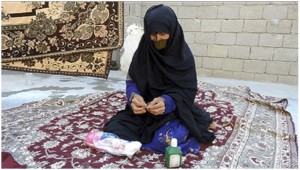 ate on the issue and many Muslim scholars have provided evidence both for and against FGM.” Four Sunni Islamic schools of jurisprudence – Hanafi, Maliki, Hanbali, and Shafi’i – FGM is either preferred or considered obligatory. Some supreme religious leaders have spoken out in support of the practice. They generally do not characterize it as mandatory in Islam, but do recommend it.One Hadith in particular is frequently relied on. In this Hadith, “when Prophet Mohammad was migrating, a woman named Umma Habib who circumcised women came to the Prophet. The Prophet asked her whether she still did what she had been doing? She replied, yes, oh God’s Messenger unless you order me to stop. The Prophet replied: ‘No, it is permissible (halal). Just be careful not to cut deep. A little and that make the woman’s skin shining and smooth and dearer to her husband.”
ate on the issue and many Muslim scholars have provided evidence both for and against FGM.” Four Sunni Islamic schools of jurisprudence – Hanafi, Maliki, Hanbali, and Shafi’i – FGM is either preferred or considered obligatory. Some supreme religious leaders have spoken out in support of the practice. They generally do not characterize it as mandatory in Islam, but do recommend it.One Hadith in particular is frequently relied on. In this Hadith, “when Prophet Mohammad was migrating, a woman named Umma Habib who circumcised women came to the Prophet. The Prophet asked her whether she still did what she had been doing? She replied, yes, oh God’s Messenger unless you order me to stop. The Prophet replied: ‘No, it is permissible (halal). Just be careful not to cut deep. A little and that make the woman’s skin shining and smooth and dearer to her husband.”
FGM in the Islamic Republic of Iran, a majority Shi’a country, has lately been receiving more attention globally as a women’s rights issue. In 2014, Iran began to be recognized among the global list of countries in which FGM is present. But is not added in the list of UNICEF officially. For the first time Rayehe Mozafarian open special campaign to improving knowledge and by opening this campaign “Stop FGM Iran”, all the efforts and field working are updating in the site and all information publish by using media. Then in the site of this campaign all news and recent activities publish in two languages, Persian and English.
The Law
While there is no specific anti-FGM law in Iran, the Islamic Penal Code prohibits bodily mutilation and can be used to combat FGM.
- Article 664 of the Islamic Penal Code states “cutting or removing each of the two sides of the female genitalia leads to diya (compensation)[1] equal to half of the full amount of diya for a woman’s life.”
- Article 386 criminalizes mutilation of the body. If the crime was intentional, it would be punished according to the retaliation (Qisas) law – the perpetrator shall be given a sentence that is equal to the crime committed. If the crime was unintentional, the penalty may be either Diya (monetary compensation or blood money) as prescribed by Islamic law for that particular crime, or Ta’zir (where Islamic law does not prescribe a punishment for a particular crime, the punishment is left to the discretion of the judge).
- Article 706 makes it a crime to eliminate the sexual ability of a man or woman. Article 707 sets the penalty for that crime as full compensation (Diya or blood money).
Under Islamic law in Iran, girls reach the age of maturity at 9 years. A father or grandfather may appoint a guardian for their children in the event they may die. In the event a child does not have a father, paternal grandfather, or guardian appointed by them, the court will appoint a representative to act on behalf of the child. Any complaint brought on behalf of the child would have to be filed by the child’s guardian or court appointed representative. Since a parent or guardian would not file a complaint against themselves for FGM, the girl would have to wait until she reaches the age of maturity to file a complaint, and this would take tremendous courage to file a complaint against her family members.
For general protections of their human rights, girls can also look to Articles 10, 20, and 21 of the Constitution (general protection of women’s rights); the Charter of Women’s Rights and Responsibilities (rights to life, physical integrity, protection against victimization, right to mental and physical health, and protection against family violence); and the Law on the Protection of the Rights of Children and Adolescents (criminalization of child abuse).
Rayehe Mozafarian, for the first time wrote specific article about FGM and disability and mention these two subjects together and some articles which support these two subjects. Rayehe Mozafarian and Kameel Ahmady have also suggested that FGM may be characterized as a disability under the Iranian Protection Law for People with Disabilities, and the Convention on the Rights of Persons with Disabilities. According to Mozafarian:
“WHO defines Disabilities as an umbrella term, covering impairments, activity limitations, and participation restrictions, an impairment is a problem in body function or structure; an activity limitation is a difficulty encountered by an individual in executing a task or action; while a participation restriction is a problem experienced by an individual in involvement in life situations. In 2014, the Islamic Consultative Assembly (parliament) of I.R. Iran passed a comprehensive bill on the right of persons with disabilities and the ministries of health and medical education were assigned to oversee its implementation. Under Article 1, the term person with disability is referred to ‘Those identified by the medical commission as having physical, mental or both disorders with a lasting effect on their health and general ability, limiting their independence socially and economically.’ … In 2002, the Islamic Republic of I.R. Iran assigned the Welfare Organisation to be responsible for the persons with disabilities. This organisation has various departments, such as cultural and social department which includes between all, the office of ‘family and women empowerment’ and also the office of ‘children and juveniles.’ The department of prevention and treatment of addiction includes a sub office on preventing disabilities. However the most important department working with persons with disabilities is the rehabilitation department and one of its offices is assigned to empowerment of persons with disabilities. The welfare organisation is responsible for the mutilation of women as all its departments have the power to prevent, empower, inform and eradicate FGM.”
Governmental Anti-FGM Interventions
While there have been close to no governmental efforts in Iran to eradicate FGM, Rayehe Mozafarian asked the Supreme Leader Ayatollah Khamenei’s view point. He has called FGM not acceptable and issued a fatwa stating that FGM is not obligatory. However, this does not go far enough, as he has characterized it as permissible. He has stated, “Today, female genital mutilation is not common among Shiites but the usage narrative show that it does not hurt if it can be done … [in certain] conditions, including compliance with health issues. But because the social norms have changed today, this action would not be acceptable…” In response to questions of whether a woman’s duty would require her to undergo FGM at her husband’s request the Ayatollah responded that, “implementation of husband’s order is obligatory for the wife if it does not have disadvantages or it is not harmful for the wife, she has to listen to her husband’s request.”
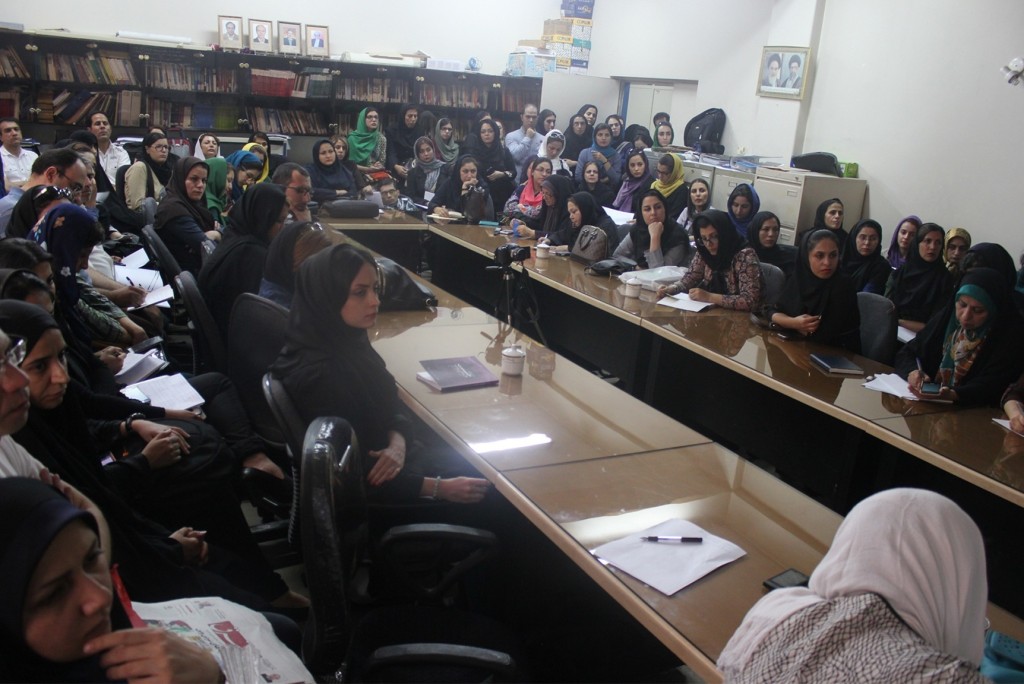 In July of 2015, the University of Tehran (a public state-run university) and Iranian Campaign Stop FGM Iran held a conference on the subject of FGM, marking the first time that an official body connected to the government publicly remarked on this issue and governmental and official media cover the news and speak out about FGM in Iran for the first time. This event broke the silence after many years. Experts discussed the harmful consequences of FGM, the underlying reasons for FGM, and an analysis of the linkage between FGM and Islam. DR. Bokharayee, Dr. Akbary and Mozafarian discussed that there was no religious precedent for the practice of FGM but that this was an antiquated practice simply given religious significance in order to remain pertinent.
In July of 2015, the University of Tehran (a public state-run university) and Iranian Campaign Stop FGM Iran held a conference on the subject of FGM, marking the first time that an official body connected to the government publicly remarked on this issue and governmental and official media cover the news and speak out about FGM in Iran for the first time. This event broke the silence after many years. Experts discussed the harmful consequences of FGM, the underlying reasons for FGM, and an analysis of the linkage between FGM and Islam. DR. Bokharayee, Dr. Akbary and Mozafarian discussed that there was no religious precedent for the practice of FGM but that this was an antiquated practice simply given religious significance in order to remain pertinent.
Non-Governmental Anti-FGM Interventions
Education and Media
The prevalence of FGM in Iran has been successfully decreased in some parts through public awareness campaigns and with the help of religious leaders who have spoken out against the practice. In the Western part near to the Iraqi Kurdistan border FGM has decreased because Kurdish people receive Iraqi Kurdish media which has reported about the campaign against FGM by Iraqi-Kurdish organizations like Wadi and the the government in the past years. Thus, Kurdish people know more about negative points of FGM.
However, in the south, people talk in another language and accent and they do not have access to Kurdish media and other local media do not pay attention to this subject.
Radio interview: Marriage failed because of FGM
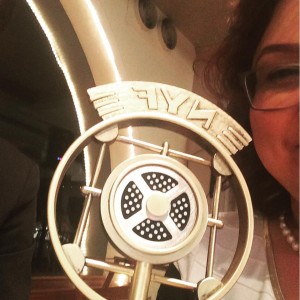
Roya Karimi Majd takes Gold Trophy at the prestigious NY Festival’s World’s Best Radio Programs Awards for Radio Farda’s FGM program
In 2014, Radio Farda in collaboration with Stop FGM Iran did the first broadcast in Farsi in which victims of FGM spoke out about the practice and its harms in their personal lives. In the broadcast a woman recounts how her marriage ultimately failed because of her inability to enjoy sexual intimacy due to her having undergone FGM. Later, her mother was interviewed telling of how she regretted her decision to circumcise her daughter at a young age. The mother lamented that had she known about the detrimental impact of the practice on her daughter’s life she never would have done it. These emotional pleas were then interspersed with commentary from clergy and outside experts who warned of the detriments of the practice as well, further imploring the public to heed their warning.
Women’s rights activists such as Parvin Zabihi and Mehrangiz Kar have spoken out about FGM in media interviews. Iraqi-Kurdish television stations have also aired TV specials about FGM in the Kurdish regions of Iran. An Iranian film released in 2014 also highlighted the issue of FGM. The film “Almond” tells the story of a Kurdish woman in Iran struggling with the consequences of FGM. This film brought increased attention to the issue of FGM in Iran, and was shown in the Growth Film Festival of Tehran as well as international film festivals.
Fatemeh Karimi has also written a book about this issues: Tragedy of the Body, Violence against Women (2010).
The new book is recently published by H&S Media, written by Reyhaneh Zahiri and translated by Manavaz Alexandrian in the titled of “Mother of cloth dolls”. One of the story of this book is about Female Genital Mutilation in Iran.
“For the first in Iran music video against FGM made by singer and artist Miss Chiman Rahmani, subtitled in English aired in most Kurdish TV and post on YouTube she tries to cover the issue of FGM and child forced marriage in her 6 minute long video music clip.”
Researcher Kameel Ahmady found that using the media, including through interviews and online media of clerics and medical professionals speaking about the ill effects of the practice can influence attitudes toward FGM.
Engaging Religious Leaders
Religious leaders who speak out against FGM can have a strong influence on changing attitudes toward FGM, particularly for those who believe FGM is a religious requirement. Religious leaders in Iran are divided on the issue, there are some religious leaders, including Sunni religious leaders in Iran, who have spoken out against the practice. The issue has been denounced by clerics in Iran who have denied that FGM is engrained in their brand of Islam.
Physical harm and family problems: None Islamic
FGM has been admonished by some clerics because, in addition to the physical harms that it causes women, they claim it causes a rift in the familial fabric because of the marital problems that decreased sexual desire and sexual dysfunction as a result of FGM can cause.
- Ayatollah Khameneie: “It is permissible but not obligatory.” See Quote
- Grand Ayatollah Seyyed Hossein Fazlollah, 2010: “Our studies of the existing texts on this subject show that female circumcision is not of Islam’s doing and that it does not have an Islamic origin. Female circumcision was a ritual from the era of ignorance (the pre-Islamic era), when it was considered a way for a woman to make herself more attractive to her husband.”
- Mala Seyyed Hasan Vazhi, West Azerbaijan: “FGM not only harms a woman’s health, but causes sexual problems in marriage which can lead husbands to ‘sin and adultery’. Female circumcision does nothing but hurt your daughter’s body. This practice must stop.’”
Rayehe Mozafarian wrote in her book the statements of these Ayatollahs:
- Ayatollah Bayat Zanjani: “Women are not circumcised. Islam has been the subject of circumcision of the male penis. Because the women do not have this part of genital.”
- Ayatollah Makarem Shirazi: “We have ordered a ban on it.”
- Ayatollah Saanei: “Circumcision is a tradition and it should be done only for men. It is not Wajib for women.”
- Mullah Talib Mudizadeh, from Bandar Pol, Hormozgan province, 2010: “Regarding the proven medical and psychological arguments about the dangers of female circumcision and availability of concrete accounts testifying that female circumcision causes frigidity and sexual problems in marriage; and also considering the fact that religion always puts great emphasis on science and the Prophet of Islam has said ‘Go in quest of science, even to China’, and most sciences have proven the disadvantages of this act and insist that it shouldn’t be performed, so it is better not to be performed. My wife (Mulavi Amineh) and I have always strictly recommended people of this port and neighboring villages not to circumcise their daughters but circumcision is good and compulsory for their sons.”
- Mulavi Sheikh Salahedin Charaki, from Parsiaan, Hormozgan province, 2012: “There are good reasons that female circumcision is not necessary any more. It has many disadvantages and maybe leads to disloyalty of men and even having several wives. Imam Shafi’I has two different opinions about circumcision and other Sunni imams do not believe that it is compulsory. Therefore, I think now that it has been proven that it is not good for sexual relations and the amount to which the cutting should be done is not definite, not doing it would be better and more appropriate. I have not circumcised any of my three daughters because I am afraid of the dangers to their body and soul.”
- Ashara al-Mubasharîn Mosque in Piranshar West Azerbaijan: “Girls’ circumcision does not have many advantages for the girl and [he] has personally warned [his] family members, relatives and friends about it. [He] has also given advice and guidance about female circumcision in [his] sermons during Friday prayers and [he] has prevented this act to be carried out on [his] own family members.”
Interventions by Civil Society and the United Nations
It was not until 2014 that FGM was first publicly discussed in Iran as a human rights issue. Before this time some activists such as Parvin Zabihi, Fatemeh Karimi (author of Tragedy of body), Rayehe Mozafarian (author of Razor and Tradition) start talking about this issue. Several Iranian students have done small-scale research on FGM in Iran, including Homa Ahadi, Paisa Rezazadeh Jalali, Elham Mandegari, and Fahimeh Hassanian, Farzaneh Daneshkhah and etc.
A few Iranian activists, Rayehe Mozafarian and Kameel Ahmady have more recently been instrumental in raising awareness in the country by publishing books on FGM in Farsi, notable in part because “Iranian authorities had let activists research FGM in Iran and had allowed those books to be published”, as the Guadian reported.
As early as 2010, Rayehe Mozafarian collaborated with UNFPA, organizing a workshop on FGM in Shiraz. In 2014, she submitted a written statement to the UN Human Rights Council on FGM, and in 2015, presented on this topic at the 59th Session of the UN Commission on the Status of Women.
In this year, she also participated as a guest speaker in Iraqi-Kurdish Parliament for the Day of Zero Tolerance to FGM. In 2011, Rayehe Mozafarian published the book Tigh o Sonat. She studied the relationship between FGM and various socioeconomic factors in hope of finding correlations that might help to diminish the prevalence of the practice. She found that women who had undergone FGM and have received an education were much less likely than those who had not received any education to impose the same practice on their daughters. In addition, economic means were a strong signifier of the likelihood of being subjected to FGM with lower income being highly correlated with incidence of FGM, and families with more financial security being less likely to impose the practice on their daughters.
In her studies found that, “there were significant relation[ships] between Female Genital Mutilation and the following independent variables: job, education, experience of Female Genital Mutilation in the family, the use of using media by women, sexual control of women, attitude of women, age of the women and marriage.” She continues writing articles and reports and started a campaign. For the first time, she could attract governmental attraction and manage several meetings with ministry of women`s affairs, national reference of children`s rights of justice ministry.
FGM declining
Kameel Ahmady published a comprehensive study about FGM in Iran in English in 2015, based on surveys and interviews of around 4,000 women and 1,000 men in Iran over the course of six years. His research produced similar findings that “…a woman’s educational attainment is one of the important factors to influence whether the daughter would be genitally mutilated or not. …[H]ighly educated women prefer not to victimize their daughter in this way; the lower the educational attainment, the more likely a mother is to follow the tradition blindly, considering it a social norm or religious duty.”
He further found that the rate of FGM seemed to be declining each year, and attributed this to several factors: changing times and modern life, elderly traditional circumcisers not being replaced by a younger generation of practitioners, wider media coverage of FGM, greater access to media including through technology, migration from villages to towns, greater access to education among youth, less interest in religion among youth, and lack of willingness by younger generations to accept FGM.
Through surveys measuring attitudinal change of mothers toward FGM, he saw a big change in favor of ending FGM. Ahmady attributed the decline of FGM in Iran in part to awareness raising campaigns. Educating each new generation about the harms of FGM was effective in deterring them from subjecting their daughters to FGM.
As part of his study, Ahmady also implemented small scale pilot interventions to address FGM. The pilot programs started out providing medical care, and increasingly used awareness raising campaigns, lobbying, and networking to build support for anti-FGM efforts especially among religious and community leaders, as well as men and women. They “used social events as a potential platform e.g. weddings, Quran lessons and funerals.”
Ahmady’s team conducted follow up visits to the villages twice annually to assess the impact of their interventions. Effective communication with the local population and identifying local individuals from the communities to carry out the work were helpful to win support from the communities.Involvement of religious leaders was also influential especially for those groups insisting that FGM is a requirement of Islam. He noted that religious leaders “need to be persuaded to make a proclamation against FGM in order to empower their communities in the struggle to end the practice. The pilot intervention has provided a platform for religious leaders to speak out against the ritual.”
His team also worked to “convince the public and especially mothers not to mutilate their daughters. We have been visiting and talking to clergymen, also important part of this work.” As a result of these efforts, Ahmady concluded that awareness raising campaigns and advocacy are critical to change attitudes toward FGM and help eradicate the practice, though these must be part of holistic efforts to address FGM along with support by government officials and religious leaders.
Other grassroots efforts to address FGM are also growing in Iran. The Azarmehr Association of the Women of Kurdistan in Iran, an association working on women’s rights issues, recently started addressing the issue of FGM. Kurdish university students also started an association against FGM, and though they were not issued a permit to operate this association, this elevated the discussion on FGM in the Kurdish regions.
Training psychology students in Kermansheh
A local campaign against FGM has also been launched in the Kermansheh and Kurdish provinces in Iran including trainings for women on the harmful consequences of FGM. The Stop FGM Middle East campaign has also been active in publicizing and raising awareness about the issue of FGM in Iran and efforts to eradicate it.
At a family consulting center in Kermansheh in Iran, Elham Hosseini and Osman Mahmoudi hold educational classes for women and parents with young children about FGM. It is also training psychology students to educate others about FGM and combat the practice. The center offers psychotherapy for women who have undergone FGM, and couples who have marital problems due to FGM. At the Hamraz Consulting Center in Javanrood, service providers have provided life skills trainings for more than 1,300 housewives and educate women about the consequences of FGM in order to prevent future occurrences of FGM. 2011 marked one of the first times FGM was publicly discussed in Iran, at a national congress on health education in Tabriz.
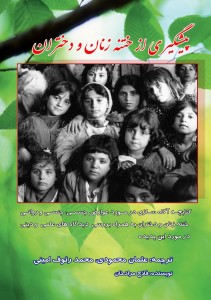 To reach out to health care professionals, Osman Mahmoudi and Muhammad Rauf Amini published a book on FGM in the first half of 2016. In the first step more than 1000 copies of this book were distributed during Ramadan month among doctors, midwives, psychologists and counselors who live in the cities of Javanrood, Paveh, Rawansar and Salas. The booklet has been produced to increase awareness and understanding of some of the issues around FGM.
To reach out to health care professionals, Osman Mahmoudi and Muhammad Rauf Amini published a book on FGM in the first half of 2016. In the first step more than 1000 copies of this book were distributed during Ramadan month among doctors, midwives, psychologists and counselors who live in the cities of Javanrood, Paveh, Rawansar and Salas. The booklet has been produced to increase awareness and understanding of some of the issues around FGM.
Following the English publication of Ahmady’s research, many international news outlets caught wind of the practice of FGM in Iran bringing international attention to this issue. The UN has also begun putting pressure on Iran to address FGM. In June 2014, the UN Human Rights Council placed international pressure on Iran to recognize the occurrence of FGM within its borders and to seek to abolish it. In response to submissions by civil society, the UN Committee on the Rights of the Child expressed concern about FGM, calling on Iran to “take measures to enforce article 664 of the Islamic Penal Code and to stop, effectively, the practice of female genital mutilation throughout the country.” The primary mode of change has been brought about in Iran as a result of increasing public discussion, awareness, and grassroots movements.
Donate now for couple therapy for victims of female genital mutilation in Iran
Challenges to Ending FGM
While in Iran there are encouraging signs that the rate of FGM has steadily declined over the past few decades in some parts, there are challenges in addressing FGM that need to be overcome.
As a result, there is little institutional push to outlaw or address the practice or to support for civil society or activists combating FGM. Many Iranians remain unaware that it is practiced there, and there is little formal research about the practice in Iran.
Due to the aforementioned reasons, even though the Penal Code bans FGM and bodily mutilation, the provisions are not enforced to address FGM. No cases of FGM have been brought in Iran. In addition, because of the familial nature of the crimes, victims do not file charges against their own parents.
While some religious leaders have spoken out against FGM in Iran, there is no consensus among all religious leaders in Iran. In addition, fatwas issued by local leaders have a limited reach – those issued in one area may not have an impact in other provinces or villages.
In addition, while there has been some media coverage of FGM and media can be useful as a combative tool, many media outlets do not address FGM for fear of backlash or facing criminal penalties. Stop FGM Iran published a letter to the media to speak out more and pay attention to FGM. Nowadays most of local media which kept silence have started to speak out without previous considerations. (By Rayehe Mozafarian/ STOP FGM IRAN)
Partner projects in Iran:
Educational Booklet on FGM in Persian
Stop FGM Iran on facebook
Project Update: Education about FGM in life skill classes for housewives
Further Information:
Elham Hosseini, Osman Mahmoudi: The relationship between honor-based violence and female genital mutilation in Javanrod county, International Journal of Health and Life Sciences, 2018
Elham Hosseini, Osman Mahmoudi: Psychosexual Complications of Female Genital Mutilation for Couples: A Comparative Study, Journals of Kermanshe University of Medical Science, 2017
Study in Iran: They call it tradition because they believe it is a prophetic tradition, 14.12.2015
Study by Osman Mahmoudi: FGM impedes men’s well-being, 9.10.2015
Tehran University organized first conference on female genital mutilation, Stop FGM Middle East, 3.8.2015
Kameel Ahmady: A comprehensive research study on female genital mutilation/cutting (FGM/C) in Iran 2015
Chiman Rahmani: The One of the Thousands, song, 2015
Iranian Film “Almond” tackles FGM, December 2014
Interview in Radio Farda: The Blade of Islam, November 2014
Violations of Girls’ Rights: Child Marriage and FGM in the I.R. Iran, Südwind 2014
Rayehe Mozafarian: The point of view of the Supreme Leader of the Islamic Republic of Iran on Female Genital Mutilation, June 2014
Fariba Davoudi Mohajer: Female Circumcision: Elegy for a Dream, Goozar, August 2010
Golnaz Esfandiari: Female Genital Mutilation Said To Be Widespread In Iraq’s, Iran’s Kurdistan, Radio Free Europe, August 14, 2013
The First International and 4th National Congress on Health Education and Promotion, May 2011, Tabriz

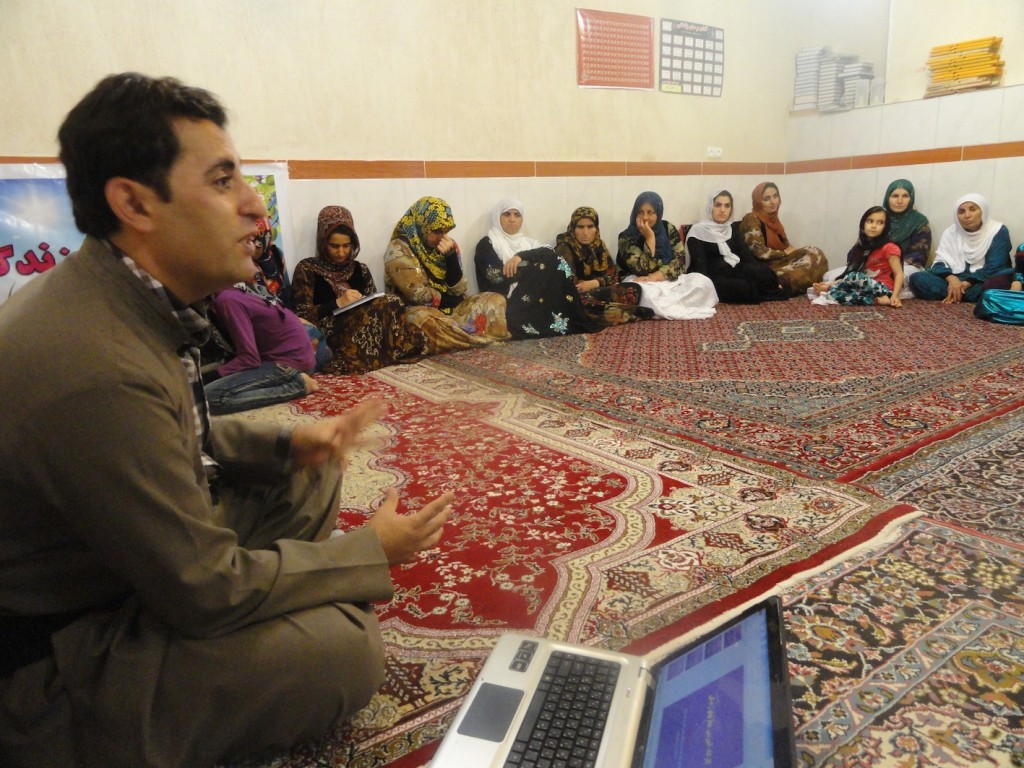
[…] Iran […]
[…] is legal in Iran where small studies in regions bordering Iraq and in the South found 40-85% of women had been cut. It is estimated that 70% of all FGC happens in the Kurdish areas. […]
[…] 3 Iran Local studies show that FGM is practiced in the provinces of Kurdistan, Western Azarbaijan, Kermanshah, Illam, Lorestan and Hormozghan. … In most cases type I is performed but there is also a relevant number of type II mutilations. … A medical survey was presented which found an FGM prevalence of 55% in a group of 348 interviewed women in Kermanshah province. From the existing studies it can be assumed that FGM is only or at least mostly practiced by Sunni minorities in Iran. Most regions are bordering Iraq, but prevalence is also high in some places in the very South, among them the city of Hormozgan and the ports of Bandar Kang and Jask. … During the last years, a vivid debate developed in the Kurdish region after several TV specials on FGM had been aired by Iraqi-Kurdish television stations which are popular among Iranian Kurds. Quelle: Stop FGM Middle East http://www.stopfgmmideast.org/countries/iran/ […]
[…] 3 Iran Local studies show that FGM is practiced in the provinces of Kurdistan, Western Azarbaijan, Kermanshah, Illam, Lorestan and Hormozghan. … In most cases type I is performed but there is also a relevant number of type II mutilations. … A medical survey was presented which found an FGM prevalence of 55% in a group of 348 interviewed women in Kermanshah province. From the existing studies it can be assumed that FGM is only or at least mostly practiced by Sunni minorities in Iran. Most regions are bordering Iraq, but prevalence is also high in some places in the very South, among them the city of Hormozgan and the ports of Bandar Kang and Jask. … During the last years, a vivid debate developed in the Kurdish region after several TV specials on FGM had been aired by Iraqi-Kurdish television stations which are popular among Iranian Kurds. Quelle: Stop FGM Middle East http://www.stopfgmmideast.org/countries/iran/ […]
[…] is legal in Iran where small studies in regions bordering Iraq and in the South found 40-85% of women had been cut. It is estimated that 70% of all FGC happens in the Kurdish areas. […]
[…] is primarily practiced in African countries, though women throughout the Middle East and parts of Asia have also been exposed to the […]
[…] [25] http://www.stopfgmmideast.org/countries/iran/ […]
[…] is primarily practiced in African countries, though women throughout the Middle East and parts of Asia have also been exposed to the […]
[…] STOP FGM Middle East, Indonesia, Iraq, Iran […]
[…] STOP FGM Middle East, Indonesia, Iraq, Iran […]
[…] STOP FGM Middle East, Indonesia, Iraq, Iran […]
[…] STOP FGM Middle East, Indonesia, Iraq, Iran […]
[…] STOP FGM Middle East, Indonesia, Iraq, Iran […]
[…] STOP FGM Middle East, Indonesia, Iraq, Iran […]